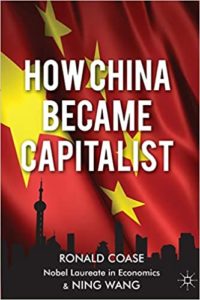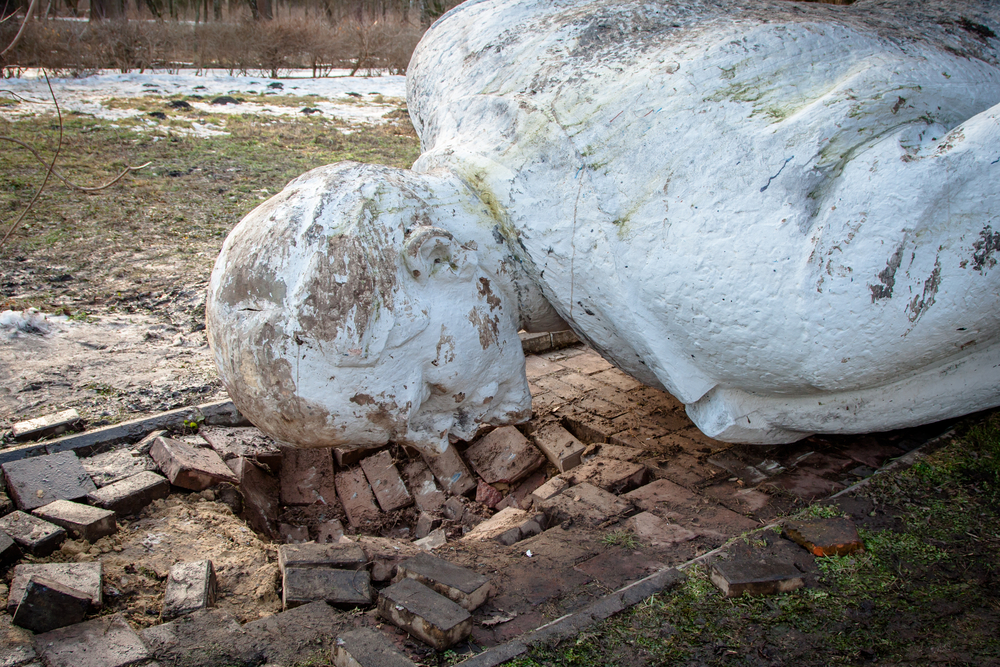These words were spoken by Vladimir Lenin in 1917. The results were not inspiring. It shouldn’t be too surprising why this effort failed – the socialist order he sought to create is impossible. Ludwig von Mises argued this point decisively in his Economic Calculation and the Socialist Commonwealth, and history has demonstrated the point many times since then.
Eventually, the Soviet Union collapsed, and Russia attempted to move to a capitalist order. However, the results we see today are less than inspiring. What went wrong? We know that a capitalist order, unlike a socialist one, is possible, so this calls out for a different explanation. Many explanations have been offered. In his book Why Perestroika Failed: The Economics and Politics of Socialist Transformation, Peter Boettke begins his analysis by noting that despite prominent announcements for “ten radical plans for economic restructuring, not a single one was ever implemented.” However, I’m not sure the implementation of these plans would have changed things.
We can see how attempting to construct an impossible situation is doomed to fail. Less obvious is the idea that just because a particular order is possible, it doesn’t follow that it can be constructed. Capitalist orders are possible, and can work, but this doesn’t mean they can be constructed. Instead, it may be the case that they need to be allowed to evolve, rather than being built.

To see how this can work, one should read the book How China Became Capitalist by Ronald Coase and Ning Wang (from which all the below quotes originate). While Russia attempted to become capitalist by political decree, Coase and Wang describe how “China became capitalist with marginal revolutions.” It started small. Here and there, small villages began to operate private farms, quietly operating under the radar. During the Great Leap Forward, this kind of behavior would have been condemned as counterrevolutionary, and quickly crushed. This time, however, the Chinese government backed off, and allowed these fledgling markets room to develop. China did not plan to transition to private farming, nor did they deliberately design a model or framework within which such farming would operate. Centralized attempts at agricultural reform had taken place before, but they were always attempts to find a new “right way” to do things and dictate it from the top down, such as “an attempt to impose a model developed in the village of Dazhai on the whole nation” which “denied local governments the freedom to take into account local circumstances.”
There was no official plan for how private farms should operate, because “private farming was not a single practice, but an umbrella name for a family of non-collective farming practices that had emerged spontaneously in rural China.” It was not until 1982 that the Chinese government officially recognized private farming as a legitimate project, well after it had emerged and established itself across the country.
One of F. A. Hayek’s most important ideas is the difference between law and legislation. Laws are realities of the world which operate separately from our designs or our wishes. This includes laws of physics, but also economic laws, such as the law of supply and demand or the reality of opportunity cost. Legislation, in contrast, is what is written down and produced by human beings. We can create and change legislation, but we cannot simply create or change laws. The best we can do is to try to embody what the law is with our legislation. By recognizing the legitimacy of the various farming developments which had emerged, China was using legislation to reflect the law. By contrast, Russia had always attempted to use legislation to guide and direct these processes, rather than reflect them.
Numerous marginal revolutions took place throughout China over the years. The truly remarkable thing about it was how little of it was planned or directed. For example, by the 1990s “Shenzhen already had more than 300 offices where people could buy or sell stocks, despite the fact that there was no official permission to trade in this way.” This is just one example of the “lag between practice and regulation.” Rather than trying to direct what changes should occur and how they should be structured, the Chinese authorities pulled back, allowing new forms of economic activity to develop independently. After they had grown into place, laws would be written after the fact, around the practices which had developed. Legislation was made to reflect economic activity, rather than being used to try to design it.
China is far from a bastion of free markets, and much progress that had been made has also been undone. Still, there is a lesson to be learned here. Lenin couldn’t construct a socialist order, but we can’t construct a capitalist order either. These things take time, and freedom.
Kevin Corcoran is a Marine Corps veteran and a consultant in healthcare economics and analytics and holds a Bachelor of Science in Economics from George Mason University.


READER COMMENTS
David Henderson
Aug 16 2022 at 10:06am
Very nicely done, Kevin.
I had no idea that the Chinese recognized private farming as legitimate as early as 1982. I had thought it was in the late 1980s.
David Seltzer
Aug 16 2022 at 1:11pm
The NEP was a policy proposed by Lenin in 1921 as a temporary free market expedient that would include private ownership of resources. Entrenched Communist ideologues resisted as it undermined state control of production and its citizens.
Andrew M
Aug 17 2022 at 9:38pm
That is not Hayek’s conception of law, as opposed to legislation, at all. That is a conception of a law of nature, something like a regularity in the working of the world. Hayek did not contrast legislation with laws of nature, though they are quite different and he of course knew that. By “law”, as opposed to legislation, or statute law, he had in mind something of which the prime example is the common law.
Kevin Corcoran
Aug 18 2022 at 1:04pm
Hi Andrew!
Thanks for your comment. I disagree, of course (otherwise I wouldn’t have written what I wrote :P), and here’s why.
You’re correct to identify the common law as an important aspect of what Hayek meant in distinguishing law from legislation. It’s also the aspect which occupied the majority of Hayek’s writing on the topic – unsurprising, given his concern at the time about the tendency of intellectuals to prefer discretion and articulated reasoning over rules. But while common law is an important example of Hayek’s insight, it’s far from the extent of it.
Hayek describes law as not only being older than legislation, but older than the common law, older than large scale societies, and even prior to the development of language. And he does actually cite what you call “regularity in the working of the world” as an example of his idea in the first volume of Law, Legislation, and Liberty, even down to the laws of physics, saying, for example, “the instances of spontaneous orders which we have been given from physics are instructive because they clearly show that the rules which govern the actions of the elements of such spontaneous orders need not be rules which are ‘known’ to these elements; it is sufficient that the elements actually behave in a manner which can be described by such rules. The concept of rules as we use it in this context therefore does not imply that such rules exist in articulated (‘verbalized’) forms, but only that it is possible to discover rules which the actions of individuals in fact follow. To emphasize this, we have occasionally spoken of ‘regularity’ rather than rules, but regularity, of course, means simply that the elements behave according to rules.”
He goes on to describe how there are rules affecting the regularity of human behavior, which lead to order in society, and what distinguishes rules and laws “as we use it in this context” from legislation. To Hayek, the chief characteristic of law over legislation is laws are what control and constrain our behavior but are not within our ability to control and alter. The common law tradition he defended treated the legal system this way, but this idea also applied beyond the common law. Social norms and traditions, while not part of the common law, are identified by Hayek as being part of law as distinct from legislation. So, too, with workings of a market order. To say that Hayek thought of law as being like the common law tradition is true as far as it goes, but to limit it to that application misses the full breadth and depth of Hayek’s insights.
Or so it seems to me. Cheers!
Monte
Aug 18 2022 at 4:51pm
The title of this post caught my attention. The global community’s appetite for a new world (read “socialist”) order under a single, unified authority (ie. Concert of Powers) has been growing stronger by the decade and since has become a mainstream ideal. Primarily, as an arbiter of peace:
– UN Chronicle, September 2012, No. 3 Vol. XLIX 2012, Dialogue among Civilizations
And an evolution towards an international medium of exchange in the form of a Central Bank Digital Currency (CBDC) is now under consideration. But the success of this endeavor remains questionable: Can we overcome our cultural differences and do we really want to?
Eric M Mack
Aug 19 2022 at 3:01pm
Here is a brief comment on the Andrew vs. Kevin exchange.
Hayek insists on the need for normative rules, i.e., rules that individuals ought to follow but may very well not follow. These are not descriptive rules or laws which describe regularities in nature or in human action.
On p.45 of the first volume of Law, Legislation, and Liberty, Hayek offers the tendency of individuals to increase their efforts in a particular direction if they believe that doing so will improve their respective prospects as an example of a descriptive rule or law. He then contrasts this sort of rule with what he (unfortunately but understandably) calls “conventional” rules.
People abiding by descriptive rules will not be sufficient to yield an order with “a beneficial character.
Indeed, the rules that Hayek is intent are reaffirming in Law, Legislation, and Liberty, are not the laws of physics, or of psychology, or of economics but, rather, “the rules of just conduct.
C. Carter
Aug 23 2022 at 7:24am
It seems like many aspects of our evolved infrastructure are easy to take for granted. I suspect most I don’t notice, let alone where they came from or how long they took to establish. For example, I recently learned that the financial foundations of modern capitalism – sophisticated financing, stocks and shares, exchanges, the transfer of capital across long distances – were laid during the early Renaissance (see Paul Strathern).
There’s a related point that many of the components of the larger social orders seem to have a kind of arch to their evolution: starting out as something like necessity or competitive advantage, spreading as best practice, becoming norm, and finally being codified.
To Kevin’s points, this doesn’t happen overnight, and certainly cant be mandated. Even more so if we take social orders as collections of many evolved elements interacting together to form a larger whole.
Comments are closed.